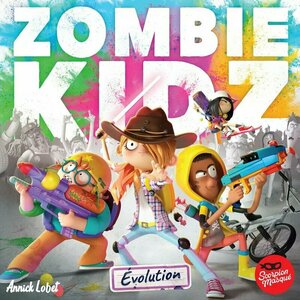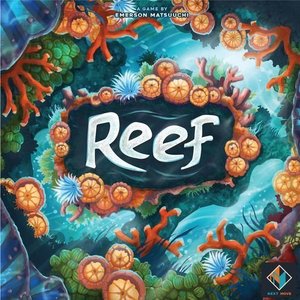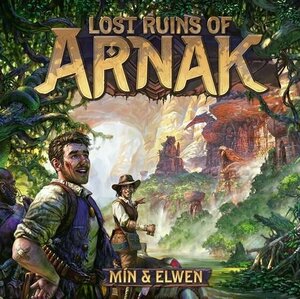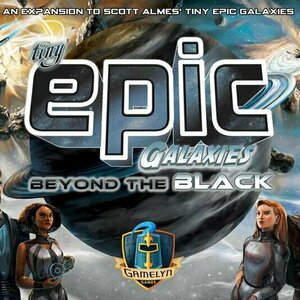
Tiny Epic Galaxies: Beyond the Black
Tabletop Game
Your galaxies have expanded to the extent of known space. You overlap with your rivals and fight...
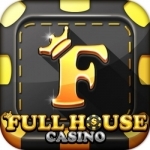
Full House Casino Jackpot Slot
Games
App
No Deposit! Vegas Classic Style Scatter Slot Machines With Baccarat! Bingo! Blackjack! Lottery!...
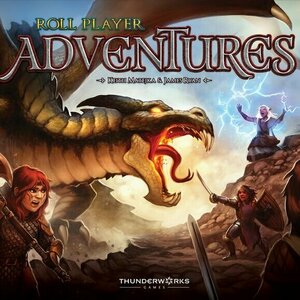
Roll Player Adventures
Tabletop Game
Your Roll Player characters have been called to adventure! In Monsters & Minions, you went to war...
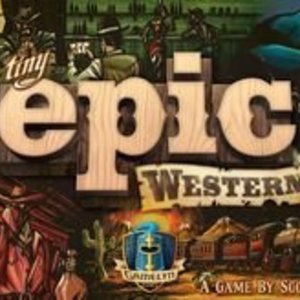
Tiny Epic Western
Tabletop Game
HOOK: Poker meets worker-placement DESCRIPTION: The West is growing day by day, and you’re...
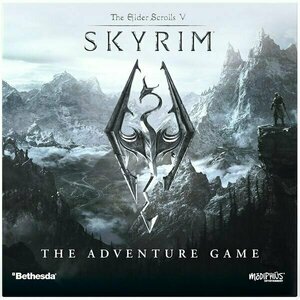
The Elder Scrolls V: Skyrim - The Boardgame
Tabletop Game
ADVENTURES IN THE WORLD OF SKYRIM! Before the Dragonborn came to Skyrim…. You are surviving...
Purple Phoenix Games (2266 KP) rated Zombie Kidz Evolution in Tabletop Games
Nov 9, 2021
Zombie Kidz Evolution is a cooperative, horror/zombies, dice rolliling, variable player powers, LEGACY game… for children?? Those mechanics do not scream “children” to me at all! What gives here? In this one, players take on the role of children protecting their schoolhouse from infiltrating zombies, and all players win or lose together. Through multiple plays, however, the game evolves and the way in which the game is played also evolves. Oh, and there’s also stickers, which ALL children love.
To setup, determine play count and which side of the board to play. Each player chooses a standee to represent them, place out one zombie tile in each area with a fence gate, and the other zombies randomly in a line near the board. The lock tokens should be placed nearby and the die is given to the starting player (in our house, my son, as he will cry if we didn’t). The player standees, “kids” from here out, are placed in the central room of the schoolhouse and the game is ready to begin!
Zombie Kidz Evolution is played over several turns, and each turn consists of three or four actions. First, the active player rolls the die. The die face determines in which school zone a zombie tile will spawn. There are five colored spaces relating to five of the six die faces, with one die face being blank – no zombies spawn on that roll. After placing the zombie tile in the appropriate zone, the player may move their kid to an adjacent zone or leave them where they are. However, if a zone contains three or more zombies, the kids cannot enter.
After movement, the player may then eliminate one or two zombies in their zone. This happens automatically – there are no combat mechanics. The player simply removes one or two zombie tiles and places them at the end of the line off-board. Should two kids occupy the same zone outside the school where a fence gate is unlocked, they may high-five and place a lock token on the gate. After this step, the die is passed to the next player for their turn.
The game continues in this fashion of taking turns spawning and eliminating zombies until the players have locked all four gates outside the schoolhouse. A brain sticker is applied to the appropriate space on the back of the rulebook to track victories, and if enough stickers have been applied, players may be allowed to open one of the 13 sealed envelopes. Inside these envelopes are an assortment of items, most of which I am unable to disclose. However, more stickers may be applied to certain components, thus changing their functions completely for subsequent plays – just as all good legacy games provide. If playing with children, expect to play several games in sequence, as it is very addicting.
Components. The physical components in this game are all fine. The standees, board, and tokens are unspectacular, but do their job. The die is cool, but under weak lighting the blue and green can be difficult to differentiate. I will not discuss anything contained in the envelopes, and I apologize for that, but I do not want to spoil anything. The art style, though, is what does it for me. Every component proudly displays amazing artwork, and half the fun is watching little ones stare and smile at the components on the table. My only request here, and I cannot believe I am saying this, is that I do wish the player pieces were minis instead of standees, but I understand the decision to keep the cardboard standees in to keep the price point super reasonable. Outside that, this little box has a ton of game inside it.
My 5-year-old son is completely addicted to this game! He requests we play almost every night, and I happily oblige, as I really enjoy it as well. Yes, it is very light. Hardcore gamers probably will not get much enjoyment out of it, though I could certainly be wrong as well. We have found it to provide so much joy to our family, and though the box says it is intended for ages 7+, I encourage parents of younger children to give it a try as well. The turns are simple: roll, spawn, move, remove, and possibly lock. We are a modern household, so zombies in this game are just “taken care of” instead of “killed,” so we are able to skirt our problematic verbiage. There isn’t much we can do to soften the art of all the kids wielding weapons, though, so beware if that is against your parenting style.
As a game, and especially as a children’s game, this one is just incredible. I can certainly understand why it is rated #1 in Children’s Games on BGG. The game tackles more advanced mechanics and throws them into a game meant for little ones. And it does this beautifully. Unfortunately, though, I have noticed that my son now is exhibiting some completionist behaviors, as he likes to complete missions in the rulebook so we can advance toward opening more and more envelopes. It is so very easy for Purple Phoenix Games to give this one a well-deserved 20 / 24. That score includes opinions from not only Laura and me, but also my wife and son. We all love it!
If you are looking for an lighter (at first) legacy game to get your feet wet, I cannot recommend Zombie Kidz Evolution enough. Adults may be able to breeze through a few games in a night, but don’t expect it to be a pushover. The die will still roll against your wishes and fill up zones you wanted to clear, and then that blocks your movement through that zone, or you may find it difficult to travel around the board very easily, as kids can only move one zone each turn, so when they are three zones away from trauma, the pressure becomes real. We have probably lost almost as many games as we have won, but we have always had a great time. And when you are spending this quality time with the people you love, “taking care of” zombies, you want to tell the whole world to enjoy the game as much as you have. So, go grab yourselves a copy right now!
Purple Phoenix Games (2266 KP) rated Reef in Tabletop Games
Aug 1, 2019
Reef is an abstract hand management, pattern building game that challenges the players to become coral reef architects and rebuild our fragile underwater ecosystem. This is a lofty goal, as our coral reefs in the real world are hurting for rejuvenation something fierce.
DISCLAIMER: I do not intend to cover every single rule included in the rule book, but will describe the overall game flow and major rule set so that our readers may get a sense of how the game plays. For more in depth rules, you may purchase a copy from the publisher directly or from your FLGS. -T
Setup is easy: shuffle the player mats and deal one to each player. The player that received the one board containing the starfish will be the starting player. Deal the players one of each colored coral piece, two cards from the deck, and 3 VP tokens. Place your reef chunks in the middle of your board in any order and you are ready to play!
On your turn you can do one of two things: draw a card or play a card. There are three cards face up to form the offer row, or a player can pay a VP token to the card with the lowest printed VP total to take the face up card on top of the draw pile (a la Small World). When you play a card, you immediately take the coral pieces on the card and place them on your play mat. The pieces can be stacked on other pieces of the same or different color, or on a blank spot on the mat. Once done, you check the card you played for any scoring conditions you may have met from your play mat. I will not go into detail about scoring, but there are several types of scoring that are employed in a game of Reef. The game continues in this manner until all of one color of coral pieces are used up. Players finish the round and then count their VP tokens. The winner is the player with the most VPs.
Components. The box is, what, normal sized? And the art on it is wonderful. So colorful and instantly recognizable. In fact, the art on the game in its entirety is truly amazing. I love it! The cards are of fine quality, but since they are handled a bit I sleeved mine. The VP tokens are of good quality, and I like that the pieces aren’t just perfect circles. It’s not a huge deal, but it helps with immersion just that much more. Same for the player mats. They could have been just as effective with square mats, but just that bit of wave makes it more enjoyable to play on for me. The big chunky coral pieces are so fun to play with, and handle, and, honestly, drop. They are very satisfying and great for those with colorblindness since they are all different shapes for the different colors they represent. All in all, Next Move Games knocks it out of the park on components AGAIN!
As you can tell by our score, we really like this game a lot. The first time I played it, my father-in-law used an interesting strategy and won the game. The next time I played it, I tried to use that same strategy and came in 3rd place. So, I chalked that win up to luck of the (card) draw and am now seeking more varied strategies to become the King of Reef. This is perhaps what also keeps the game from being a Golden Feather Award winner – I can play my game strategy and you can play yours, but that’s it. There is no real player interaction. As one Duke of Dice Alex would sing it, Reef is actually just “multiplayer solitaire.” While that is completely appropriate and non-offensive, I believe that with some more player interaction I would be more apt to bump this one to a 6. That said, we at Purple Phoenix Games give Reef a well-deserved bubbly score of 15 / 18. Emerson has himself another hit and I am proud to have it in my collection. You should grab it too, maybe.
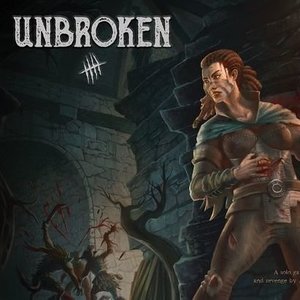
Unbroken
Tabletop Game
Not all adventures end well. Some groups meet their untimely demise at the hands of monsters all too...
Boardgames PrintandPlayGames 1playergames
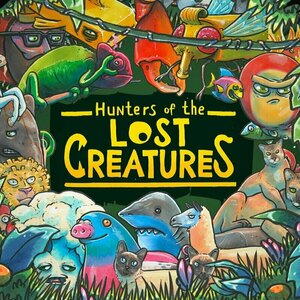
Hunters of the Lost Creatures
Tabletop Game
Collect the lost creatures and build the weirdest wildlife park. Will you choose the right hunter at...
Purple Phoenix Games (2266 KP) rated Lost Ruins of Arnak in Tabletop Games
Feb 7, 2021
Players, or “archaeologists” as the game coins them, will have only 5 rounds to explore as much of the board as possible, which includes a hidden temple as well as the jungle proper. At the end of the 5 rounds, players will add up all victory points they have obtained from the temple, any treasure they have left, points on any cards collected, and guardians they have overcome.
“Lost Ruins of Arnak” takes place on, well… Arnak. It’s a fictional jungle that is teeming with wild animals and guardians which keep watch over various treasures all over the expansive island, from here forward referred to as the giant game board. These guardians appear when you explore a new jungle tile for the first time. They attack only if you stay in the location longer than a turn OR if you return to the location on a subsequent turn. If you eliminate a guardian, they provide a couple victory points towards your overall total at the end of the game, and a slight bonus when collecting artifacts from other locations later. Being attacked by a guardian isn’t the end of the world, but can have detrimental effects on your personal deck of cards if you fail to overcome a guardian too many times.
While in the jungle, you may place a single meeple, or “archaeologist” on your turn to discover a new area, or visit a previously discovered one. These new areas contain a guardian and some sort of gold amount or trinket (idols, artifacts, or jewels). These items can be used to push your token further through the hidden temple (see below) OR to purchase cards to improve your play deck going forward. While navigating this mysterious jungle can seem exciting at first glance, you have to be careful not to let your gold fever take over, as it may leave you with minimal points by not using some worker placement to explore the mysterious temple ruins further.
While the jungle takes up a majority of the board, there is a temple which players navigate through simultaneously on the right hand side of the giant board. While it isn’t as visually appealing as the jungle portion of the board, it serves by far the highest purpose by scoring victory points. As your token travels through this temple, more and more treasure (victory points) await. It is not suggested in the rulebook, but should be noted that failing to spend ample treasure to work your way through the temple is almost a sure-fire means of not having a chance to win the game. The mechanic of exploring the temple is unique, but can be costly in terms of managing your resources properly. In my opinion, this takes away from the luster of traversing through a hidden temple and finding as much fat loots as possible. Rather, it feels like another board game I own, where you are furiously chucking dice just trying to get through with no time to look around.
The final mechanic of the game, which, as I read reviews myself prior to purchase, thought would be more prominent, is the deck building mechanic. You are provided a few cards at the start, which is similar to most any deckbuilding game. These basic cards are your first few resources to use for traveling around the board OR for their monetary value in either gold or scrolls. Using the cards for travel allow you to explore different levels of the jungle on the game board. The lower areas of the board require less travel points, while the more lucrative spaces higher up in the jungle require more. To get more travel points, you will need better cards from the decks provided. By using your gold, also an aspect of each card, you may purchase stronger cards from the supply. So, there is a balance you must find between using your cards for travel or for purchases each turn. This can be very limiting with only having the 5 rounds in which to play.
My final thoughts: I am a total sucker for pretty much anything that says the words “deck building” on them, and this game was no exception. I went into this game thinking there was going to be this new way of using a deck building mechanic to also explore a really well crafted game board. I could not have been more wrong. The deck building aspect got so lost in the other mechanics, that I felt like I rarely had the opportunity to actually build my deck. After 3-4 plays of this game, with varying player counts from 2-4, I always ended up with a deck no bigger than about 15-20 cards. When I think deck build, I think of those powerhouses like Marvel Legendary, Ascension, or Star Realms where you are really transforming your deck into a large deck by the end. On top of that, most highly regarded deck builders require you to strategize somewhat in which cards that you buy to compliment your current deck further. Arnak completely leaves both of these elements out. Most times I found myself only able to purchase 1 card in the supply due to lack of resources that I did not have any choice in how that card would compliment my deck or not. It was merely just collecting a card to try and give my deck any sort of a distinct advantage going forward. Now, don’t get me wrong, like the game board, the artwork on the cards is stunning. By far this saves the poor mechanism of the actual cards themselves.
To me, the amount of mechanisms in the game is what gets in its own way. Its that classic, everything but the kitchen sink expression. The exploration gets in the way of the deck-building, which gets in the way of the worker placement, which gets in the way of the resource management. When I found myself wanting to build my deck, it was more crucial that I move up the temple one step. When I wanted to move up the temple, I was missing a certain idol, so I had to resort to wasting cards for gold to purchase a card for my deck that I really didn’t want. So while I think the premise is really thrilling for what this game could have been, in my opinion it just fell short. I left me wanting to explore the upper part of the jungle I never got to. I left me wanting to look at more of the artwork on the cards I never was able to purchase. In the end, I made it to the top of the temple. I couldn’t wait to enjoy my heaping pile of fat loots that awaited my studded archaeologist. However, once I turned over the treasure token, I only acquired another measly 12 victory points. This feeling left me wanting more from this game that was so hyped for its gameplay. I no longer felt like Indiana Jones, and more like I was in a bad B movie hoping for a better acting career.
